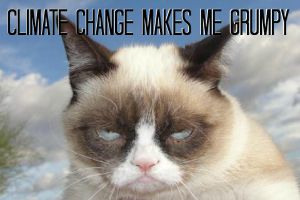Recently, I had the privilege of attending a Design Lab convened by the Brainerd Foundation on 21st Century Advocacy. The task at hand? Consider investments the foundation could make during its sunset years to support a strong and sustainable Northwest conservation movement that uses smart tools and tactics to build people power.
The convening was expertly facilitated by Beth Kanter, an author, trainer and thought leader that has been helping groups harness social media for social good for many years. It included a presentation on emerging technology by Cheryl Contee of Fission Strategy, who cautioned that nonprofits have not only fallen hopelessly behind our for-profit counterparts in leveraging new digital tools, we are also not keeping pace with the changing consumption habits of our audiences. But the thing that struck me from all the discussion at this gathering was not the importance of email segmentation (although that’s key!) or other technology best practices. It’s that relationships are still paramount. Technology can help scale and support them, but Snapchat and Periscope and SMS are, after all, just vehicles to connect humans.
Henry Timms of 92nd Street Y had a great quote that put the internet in perspective. He was talking about our obsession with virality: how can I get my climate video to reach millions of people? Include grumpy cat? Set it to the tune of Gangnam Style?
Set it to the tune of Gangnam Style?
Nope. Get rid of that wildfire mentality, and tune in to the campfire reality of communications, even in a web 2.0 world. Content and ideas still move from person to person. So if you want them to travel far, you better figure out who is in your network and how you can get them excited to participate and share.
The idea of nonprofits leveraging our networks is not new. Beth Kanter wrote a wonderful book about it in 2010. But the look and feel of those networks needs to evolve to keep pace with demographic and technological changes. The mainstream environmental base of today doesn’t look like the rest of the country. It’s not broad or diverse enough to win.
How do we make conservation relevant to young people, when only 32% of millennials see themselves as environmentalists? How do we connect with the frontline communities that are disproportionately impacted by bad air and water quality, heat islands, drought and floods?
It’s back to that campfire, where stories are exchanged and relationships are built. Many green groups are working to broaden the tent and invite social justice allies in. But, as Cam Fenton explains in his reflections on this summer’s March for Jobs, Justice & the Climate, a big tent strategy “sometimes feels a little too much like it’s just throwing a big sheet over already existing divisions and inequality across and within movements.” Fenton recommends that we spend less time looking up at that tent, and more time looking at the ground beneath our feet, and the intersections between movements that signal opportunities for durable alliances, not one time coalition projects.
At the Brainerd Design Lab, the idea of laying down our organizational agendas to spend more time in community, listening, came up again and again. Technology can certainly facilitate this, but sometimes all the equipment you need is two ears and a mouth.
–Nicole Lampe
